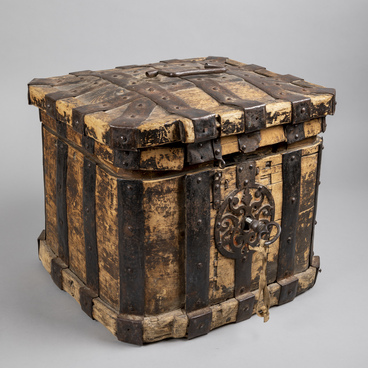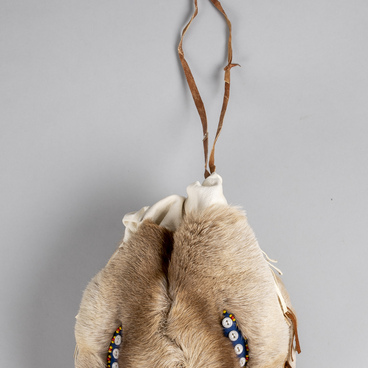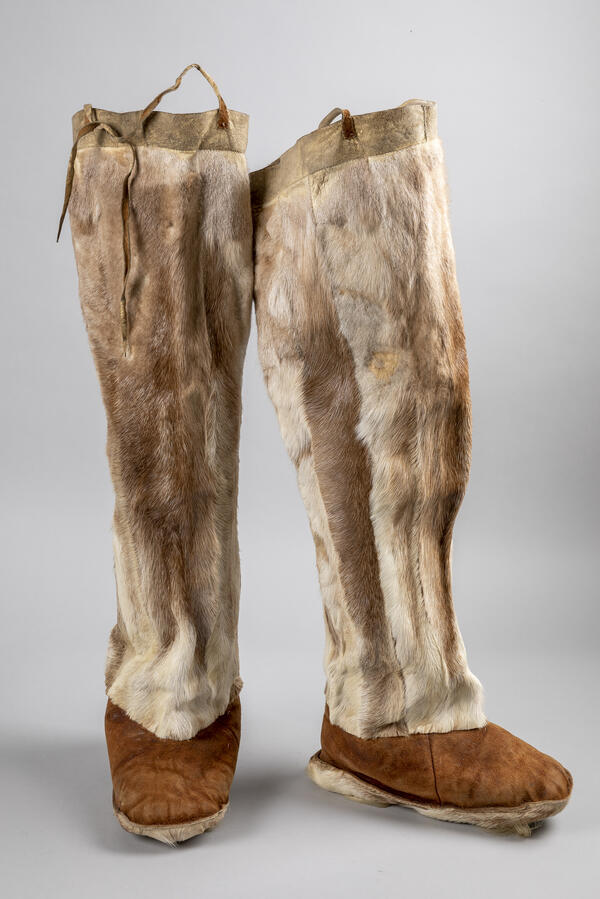The men’s hunting sak coat in its present form — a light white robe worn over winter clothes — entered the Khanty culture fairly recently. In the 20th century, it was borrowed from the Russian hunting culture where it was known as a “camouflage robe”.
The hunting robe lets the wearer blend into the environment thanks to its color or camouflage pattern and additional masking elements such as leaves, branches with which could be attached to the robe.
What makes this robe special is that it can be worn over any clothing. The camouflage robe is light and does not restrict movement.
Unlike European (Russian) camouflage, the Khanty hunting sak coat does not have a wide hood that hides the hunter’s head. Instead of the hood, the Khanty robe features a cloth or fur collar. This white calico sak coat has a cloth collar.
Hunters wore winter sak coats if they were waiting for an animal in a concealed position, and did not move around. Such robes were always made larger than ordinary clothes, since they were worn over other clothes and needed to allow the person to move freely, even during intense physical activity.
As a rule, in 20th-century central Russia and Siberia, including the territories of the indigenous peoples of the North, winter camouflage hunting robes were sewn from simple fabrics, like calico or satin. They were cheap to make and easy to wear.
Today, men’s hunting sak coats are still used in areas with a strong hunting culture. The only difference is they are now sewn from more modern synthetic materials, and bought in specialized hunting stores. As of today, traditional hunting camouflage sak coats can only be seen in museum exhibitions, including the Ugut Museum of Local History named after Pyotr Semyonovich Bakhlykov.







